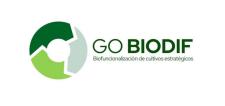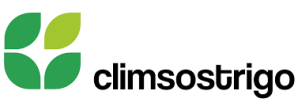COVERCROPS Operational Group: Cultivation and use of aromatic and herbaceous species among fruit trees for the diversification of products and ecosystem services associated with farms and agro-environmental policies
- Type Operational group
- Status In progress
- Execution 2023 -2026
- Assigned Budget 120.000,00 €
- Scope Autonómico
- Autonomous community Aragón
- Main source of financing CAP 2023-2027
The COVERCROPS project, which will run until 2026, focuses on improving soil health and increasing biodiversity on fruit orchards. Although final results are not yet available, initial findings suggest that sage crops show more favorable growth in conventionally managed plantain plots. The implementation of cover crops, such as sage, could reduce dependence on herbicides.
Furthermore, the adoption of these practices can facilitate compliance with agricultural policy regulations, which could translate into increased income. Main recommendation for farmers: Consider implementing sage as a cover crop in conventionally managed plantations. Potential benefits: This practice could contribute to long-term improvements in soil quality. Stay tuned for the final project results, which will provide more concrete data on implementation costs, production impacts, and potential additional income.
Although the COVERCROPS project is ongoing and will end in 2026, initial results are promising. In the platerina trial, salvia survival is remarkably good (60–90%), suggesting that conventional management favors its development. Furthermore, salvia growth in platerina is more uniform than in cherry, indicating more favorable growth conditions.
These preliminary findings point to the potential of sage mulches, especially in combination with conventional management practices, to promote biodiversity and soil health on fruit farms.
The COVERCROPS project activities focus on designing, implementing, and evaluating a cover cropping system for herbaceous and aromatic plants planted among fruit trees. The objective is to increase ecosystem services associated with the crop, such as biodiversity and soil health, and to diversify production by obtaining an alternative herb crop. The project's main activities include:
- Sowing and planting design: Selection of herbaceous and aromatic species adapted to the growing area and management proposal for each cover crop. An experimental design was developed in plots of organic cherry and sycamore trees under conventional management, with three treatments: a control, sowing of herbaceous cover crops, and planting of aromatic plants.
- Selection of aromatic and herbaceous cover crops: The herbaceous mix, designed by Agrocultivate, includes vetch, oats, buckwheat, mustard, and alfalfa. CITA advises on the selection of aromatic species.
- Determining and implementing test plot management: Specific management is determined for each coverage, including planting, irrigation, and fertilization.
- Technical monitoring and evaluation: General data (climate) and specific data on the trial (environmental, pests, entomofauna, soil) are collected to assess the proposed innovations.
Subtasks include:
- Monitoring the implementation of aromatic species cover: CITA samples sage plants to record their height and width.
- Monitoring the implementation of herbaceous cover: Agrocultivate carries out plant density sampling.
- Monitoring beneficial entomofauna: SEO/BirdLife assesses predatory and parasitic insects of major pests, using traps and predator hotels.
- Soil quality monitoring: Agrocultivate takes samples to analyze microbial biomass, respiration rate, and physicochemical parameters.
- Soil moisture monitoring: FITA determines moisture with a surface sensor. Impact on the microclimate generated by each treatment: FITA installs temperature and relative humidity loggers.
- Monitoring the impact of treatments on pests and diseases: Nectacinca performs phytosanitary controls, and FITA monitors key phenological stages. Final production assessment: Nectacinca samples trees to determine the percentage of kg/tree.
- Final post-harvest quality assessment: SAT Río Cinca evaluates the fruit's hardness, sugars, and size.
- Study of the economic benefits of different coverages: Economic balances of inputs and outputs are made to determine whether the models can be extrapolated to other plots and farms.
- Dissemination plan: SEO/BirdLife coordinates dissemination activities, including press releases, videos, and awareness-raising events. The project is aligned with the areas defined in the PEPAC 2023-2027, including efficient natural resource management, organic food production, and environmental protection.
The COVERCROPS project addresses biodiversity loss and soil degradation on fruit farms. It offers farmers the opportunity to reduce their dependence on inputs such as pesticides and fertilizers, while also diversifying their products through the cultivation of aromatic plants. The project's solution is based on the design and implementation of herbaceous and aromatic cover crops. These covers are designed to improve soil quality, attract auxiliary fauna that aids in pest control, and generate alternative production through the use of aromatic plants.
- Name of the coordinator/entity: Aragon Foundation for Innovation and Agri-Food Transfer
- Postal address: Avda. Montañana, 930, 50059, Zaragoza
- Coordinator/entity email: info@fita-aragon.es
- Telephone: 976716189
- Fundación de Innovación y Transferencia Agroalimentaria de Aragón
- NECTA-CINCA SL(lucia.plaza@cincagroup.com)
- SAT 4301 RIO CINCA(lucia.plaza@cincagroup.com)
- SEO/BirdLife(gestion@seo.org)
- Soluciones Agrícolas Cultívate S.L.(jose@agroculTivate.com)
- Fundación de Innovación y Transferencia Agroalimentaria de Aragón






